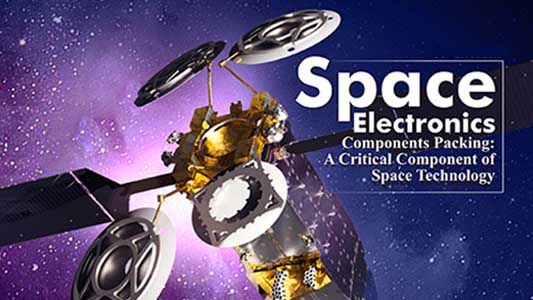Case Study: The Space Electronics Corporation
Case Study: The Space Electronics Corporation
CASE: THE SPACE ELECTRONICS CORPORATION
The Space Electronics Corporation is a subsidiary of a major firm with sales in excess of $300 million. Space Electronics holds substantial positions in commercial and military electronic systems markets, but profitability and market position have been declining. About a year ago, it became apparent that two R&D projects were coming up: a new electronic guidance system for the stealth bomber, and electronic control systems for a remote-controlled military airplane. These appeared to be the only two major projects coming up in the next few years. The executive committee had to decide whether or not to pursue these two projects. This would involve taking a radically new course of action, going after the prime contract for the electronic systems, whereas in the past, the company had operated as a subcontractor to other primes. (Case Study: The Space Electronics Corporation)

Space Electronics – Components Packing: A Critical Component of Space Technology
The Executive Committee Meeting
In mid-September, Reade Exton, the president, opened the meeting. “As you all know, our profitability and market position have been declining. We have landed only one new proposal during this period, and there is great pressure from headquarters to go after these major projects. We have all had an opportunity to review a copy of the proposals, and I’ll let Glenn start the discussion.”
Glen Overton, vice president, engineering. “About a year ago, it became obvious that our engineering activity was go- ing to decline. The decision was made that a joint effort with marketing would be undertaken, and after a series of meetings, it was decided that our best course of action was to aggressively pursue these two large contracts.”
Oliver Whittier, vice president, finance. “Frankly, Glenn, I have reservations about such a major departure from our past policies and by the magnitude of these projects. I’m worried about the increased overhead and the drain on our current prof- its. And I have a gut feeling that our probability of getting those contracts is less than you seem to think.”
Ted Byron, vice president, marketing. “Although you may estimate that the probability of gaining these projects is low, the payoff is enough to turn our whole picture around. These contracts will put us on the map. My best ‘guesstimate’ is that our chances are closer to 75 percent than 60 percent. Don’t forget, I have a lot of personal contacts back in Washington, and while that is no guarantee, it sure doesn’t hurt.”
Paul Brown, vice president, industrial relations. “I agree with Oliver. I have my doubts as to our chances of getting such a large-scale project, and I am worried about our people. If we should fail to get these contracts, people could get hurt. We may have to have layoffs and that is a bad business. I think we have a certain responsibility to the people here.”
Mort Jenson, vice president, manufacturing. “Let’s face it, if we pull these two proposals out of the hat, they will love us at headquarters. We’ll be superstars! But on the other hand, we could take a real beating if these projects fizzle out. I think we have to consider the risk factor and what might happen to the company if we fail. And, like Paul says, a number of our line employees could take a beating if things don’t work out.”
Glen Overton. “Listen, fellows, there are no lead-pipe cinches in this business. But don’t you think Ted and I have a better feel for our probabilities than people in personnel? If a downturn were to occur, our company will be hard-pressed anyway. Frankly, I’m not quite as optimistic as Ted here, but I still think our chances are in the 60 percent range. Even at that, it seems like a good risk because even if we only get one of the projects, our company will benefit greatly. Plus our R&D will stand to gain a heck of a lot by being involved in the state of the art. We’ll be able to attract new talent.”
Mort Jenson. “One of our past problems was the isolation of R&D from the rest of the organization. I feel that we should seek to achieve more interdepartmental cooperation. So I think it is important to get all the differing viewpoints out on the table.”
Reade Exton. “I think we have had a good discussion, but now what is our decision? As you know, there is a lot of pressure from headquarters to go after these projects, but it has to be a team decision. Frankly, we are between a rock and a hard place. There will have to be a significant expenditure just to pursue these major contracts, and our R&D activity will be al- most exclusively devoted to the proposals for about three months, and that will include 10-hour days and seven-day work weeks. There definitely is a degree of risk involved, although the exact odds are hard to predict. One thing is sure: if we don’t go after the projects, we won’t get them.” (Use the Case Analysis Form on the following page.)
For this Case Study Assignment, review this week’s Learning Resources, including the case study “The Space Electronics Corporation” in Chapter 15 of the course text. Keep in mind the concepts of transformational change, strategic change management, and the organization’s technical, political, and cultural systems.
Included:
- 1. Compare the problems in the case study at the macro and micro levels. Use the Learning Resources as a guide.
- 2. Analyze the causes of the problems. Refer to the specific systems that are, or will be, affected by these problems.
- 3. Determine alternatives for solving the problems you identify.
- 4. Provide recommendations for solving the systems-related problems.
- 5. Justify your solutions with specific references and examples found in the Learning Resources or in your own experiences. (Case Study: The Space Electronics Corporation
References
https://www.jstor.org/stable/27673109



